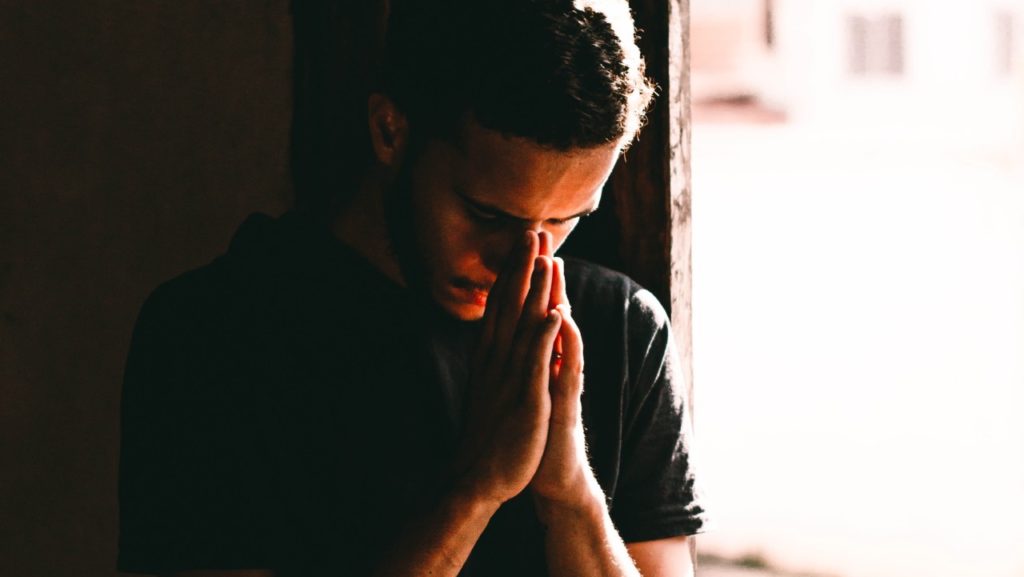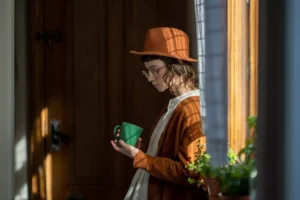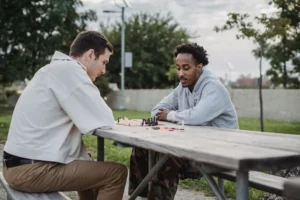If someone had told me at the beginning of 2020 what lay ahead, I would have thought they were paranoid and alarmist. Yet in just months, speculation became reality as life changed suddenly and dramatically. For me, the pandemic and cultural unrest — around everything from race to the economy to the election — have been made even more scary by the loss of clarity. No one is sure what is happening or what we should do about it.
Scrolling through Facebook is like treading through a verbal war zone as Christian friends virtually scream at one another for everything from wearing (or not wearing) masks to supporting (or not supporting) certain political candidates or social justice groups. These anxieties pile on top of those we already experience in a culture that is accelerating away from the Christian norms that once governed society. Our moment calls for a response — but what can we do?
John Stonestreet offers a caution. “As grave as our moment is, it’s just a moment,” he said. “We can never understand the story from the moment. We have to fight to understand the moment from the story.”[1]
Stonestreet was speaking at the 2019 Touchstone Conference, prophetically themed “Fight or Flight? The Benedict & Other Options for Facing the World, the Flesh & the Devil.” Since it was published three years ago, Rod Dreher’s “The Benedict Option” has continued to spark conversation. Justice Samuel Alito even cited the book in his majority opinion for a Supreme Court religious liberty case in July of this year.[2] Preserving our story so that we can respond to our moments is what “The Benedict Option” is all about.
Drawing from the example of Saint Benedict, the sixth-century monk who founded Benedictine monasticism in the face of Roman decadence, Dreher exhorts Christians, “If we want to survive, we have to return to the roots of our faith, both in thought and in practice. […] In short, we are going to have to be the church, without compromise, no matter what it costs.”[3]
Throughout my reading of “The Benedict Option,” I was struck by its particular relevance to singles. As a group, we are most at risk for both the isolation and cultural assimilation Dreher warns about. And yet, as Paul said in 1 Corinthians 7:32-35, singleness can be a gift, offering us the opportunity to be focused on the things of God rather than the things of earth. Like the monastics, we can use our singleness to uniquely learn, live, and tell our story to the world.
Learning our story
The Christian classic “The Rule of Saint Benedict” was written to govern monastic communities. It begins, “Listen carefully, my son, to the master’s instructions, and attend to them with the ear of your heart.”[4] Benedictine monks had to listen to their religious leaders, but also to the readings of Scripture and religious works. They had time set aside each day for reading and studying.
Dreher writes, “Education not only has to reset our relationship to ultimate reality, it also must reestablish our connection to our history.”[5] In other words, the purpose of this education is rooting us into our story. This is historically part of Christian catechesis, a robust program of teaching to ground new converts and believers in the faith. Our grounding begins with knowing Scripture — both the Old and New Testaments. It also includes learning our Christian history. There are wonderful surveys available (like Justo L. Gonzalez’ The Story of Christianity volumes) or we can read the writings of Christians from ages past. I recently discovered the online community Read the Fathers, which links to online texts and provides a reading plan for ancient works. You can also go straight to the Christian Classics Ethereal Library and read anyone from Thomas Aquinas to John Wesley.
Living our story
Benedictine monks didn’t just learn their story; they shaped their lives around it — when they prayed, what they ate, when they worked, even how they slept (fully clothed, “always ready to arise without delay […] to arrive at the Work of God”).[6] While our context is very different, some of these practices can still help us build life rhythms that will direct us to God. In my own life, I’ve found the following particularly helpful:
Praying the Daily Office.
Monastics like Saint Benedict stopped to pray seven times a day following the example of Psalm 119:164. Today, this is known as the Daily Office. It has been adapted over the years by different Christian traditions, but it still features set prayers and a cycle of Psalms. Right now, I use “The Book of Common Prayer,” 2019 ed.
Observing the Christian calendar.
Christians since the early church days have worshipped on Sunday to commemorate the Resurrection. By the fourth century when the Christian calendar became the official calendar of the Roman empire, annual holy days and seasons had been added, including Christmas and Easter. The Benedictines lived by this calendar, and recovering its richness has made these celebrations more meaningful for me.
Practicing spiritual disciplines.
The Benedictines made spiritual disciplines part of their routine. In his “The Spirit of the Disciplines,” Dallas Willard writes, “The secret of the easy yoke, then, is to learn from Christ how to live our total lives, how to invest all our time and our energies of mind and body as he did.”[7] If Christ practiced spiritual disciplines — like fasting, solitude, and silence — how much more should we?
Telling our story
I’ve benefitted from some of these traditions on my own, but most are meant to be practiced in community. In 1 Corinthians 12, Paul explains that the Holy Spirit equips each of us as members of Christ’s body, gifting us “for the common good” (verse 7). Our lives are not our own. Dreher writes, “Unless you have the rare calling to be a hermit, obeying God and being true to our divinely given nature mean engaging in community life.” (123) Forming strong community in our fragmented world is hard. With the help of the Holy Spirit, we can apply some Benedictine wisdom to our own lives.
Shared commitment.
When joining a monastic community, Benedictines took a vow of stability (they could not move away unless ordered by their abbot).[8] Such commitment seems impossible in our culture where mobility has been elevated almost to necessity, and church-hopping is the norm. There are good reasons to change churches and relocate, but if we want to develop real community, we will have to commit to a local church and make her people a priority.
Shared table.
Benedictine monks ate together; eating alone was a disciplinary measure.[9] Stories of shared meals fill Scripture, culminating in the Lord’s Supper. God’s choice to communicate His love for us through a shared meal isn’t arbitrary; as Christine D. Pohl writes, “A sacred element infuses the shared meal of the Eucharist as well as ordinary communal meals.”[10] Since the pandemic began, my spiritual life has been nourished by more meals around my family table, and I look forward to when we can sit around larger tables again. A commitment to regular meals with fellow Christians — be they daily or monthly — is a Benedict Option step anyone can take.
Shared learning.
Saint Benedict prescribed reading aloud as a community. Learning in this way strengthens us as the body of Christ, as our knowledge is shaped communally and in dialogue with one another. We can start or join groups dedicated to adult catechesis — books, Bible study, or video/audio teaching. Local social distancing has inspired me to connect with the wider Christian family online in groups formed around podcasts, Church history and Scripture reading — including a group dedicated to discussing “The Benedict Option.” Likewise, Boundless fans can connect on Boundless’ social media pages to share experiences around young adulthood, singleness and other generational common ground.
Shared life.
Benedictine monks lived together in a shared space — something that seems radical in a society shaped by individualism. Yet Dreher shares stories about everyday people who take steps toward communal living — from church members moving into the same neighborhood to singles practicing regular, robust hospitality.[11] Though sometimes unavoidable, single-person households are a modern innovation; Christian singles historically lived with families or intentional communities. When we share physical space with other believers, it enables us to engage in Benedict Option practices more organically. I have friends who were blessed by spending their single years with Christian roommates, and my own life has been enriched by the choice to live with family.[12]
When we live into these practices, we tell our story to one another, and we tell it to ourselves as a community of faith. As we are strengthened as a body, we are more able to share Christ with the world. Saint Benedict taught, “All guests who present themselves are to be welcomed as Christ, for he himself will say: ‘I was a stranger and you welcomed me.’”[13] The monks had a detailed plan for hospitality that included not only a shared table but shared prayer and Scripture reading. In other words, the Benedictines told our story to all who would listen. Christ calls us to do the same.
Our moment in history
As I’ve tried to make sense of life this year, I’ve found myself leaning into Benedict Option principles. The U.S. Christian witness has been divided over cultural issues for some time, and 2020 has only provided more opportunity for confusion. In his own talk at the 2019 Touchstone conference, Dreher picked up Stonestreet’s theme:
It’s more urgent now for the church to tell itself its own story and its children its own story than it is to tell the outside world about the gospel.[14] It’s not either/or; it’s both/and. But we have to reprioritize learning our own story and living our own story out because the knowledge of it has become dangerously thin.[15]
This urgency is all the more relevant in today’s 2020 cultural moment. In the midst of so much uncertainty, I have found clarity by returning to our story. As we in the church learn and live our story, we tell it to each other and we remember who we are. And then, even in moments like this one, we have hope to offer to an uncertain world, because we already know how the story ends.
Copyright 2020 Candice Gage. All rights reserved.
***
[1] John Stonestreet, “Bene-Kuyper: A Modest Proposal,” Touchstone, filmed October 11, 2019 at The 2019 Touchstone Conference, Deerfield, IL, video, 15.58, https://www.touchstonemag.com/conferences/bene-kuyper-john-stonestreet.php.
[2] Rod Dreher, “Big SCOTUS Win For Religious Liberty,” The American Conservative, accessed July 13, 2020, https://www.theamericanconservative.com/dreher/big-scotus-win-for-religious-liberty/.
[3] Rod Dreher, The Benedict Option: A Strategy for Christians in a Post-Christian Nation (New York: Sentinel, 2017), 3.
[4] Saint Benedict, The Rule of Saint Benedict in English, ed. Timothy Fry, O.S.B. (Collegeville, MN: Liturgical Press, 1981), 15.
[5] Rod Dreher, The Benedict Option, 152.
[6] Saint Benedict, The Rule, 49.
[7] Dallas Willard, The Spirit of the Disciplines: Understanding How God Changes Lives (New York: HarperCollins, 1988), 9.
[8] Saint Benedict, The Rule, 79.
[9] Ibid., 50.
[10] Christine D. Pohl, Making Room (Grand Rapids, MI: Eardmans, 1999), 30.
[11] See Leah Libresco Sargeant, Building the Benedict Option: A Guide to Gathering Two or Three Together in His Name (San Francisco: Ignatius Press, 2018).
[12] See C.R. Wiley, The Household and the War for the Cosmos: Recovering a Christian Vision for the Family (Moscow, ID: Cannon Press, 2019).
[13] Saint Benedict, The Rule, 73.
[14] Robert Louis Wilken, “The Church as Culture,” First Things, April 2004, https://www.firstthings.com/article/2004/04/the-church-as-culture.
[15] Rod Dreher, “St. Benedict: The Father of Us All,” Touchstone, filmed October 12, 2019 at The 2019 Touchstone Conference, Deerfield, IL, video, 34:55, https://www.touchstonemag.com/conferences/st-benedict-rod-dreher.php.












